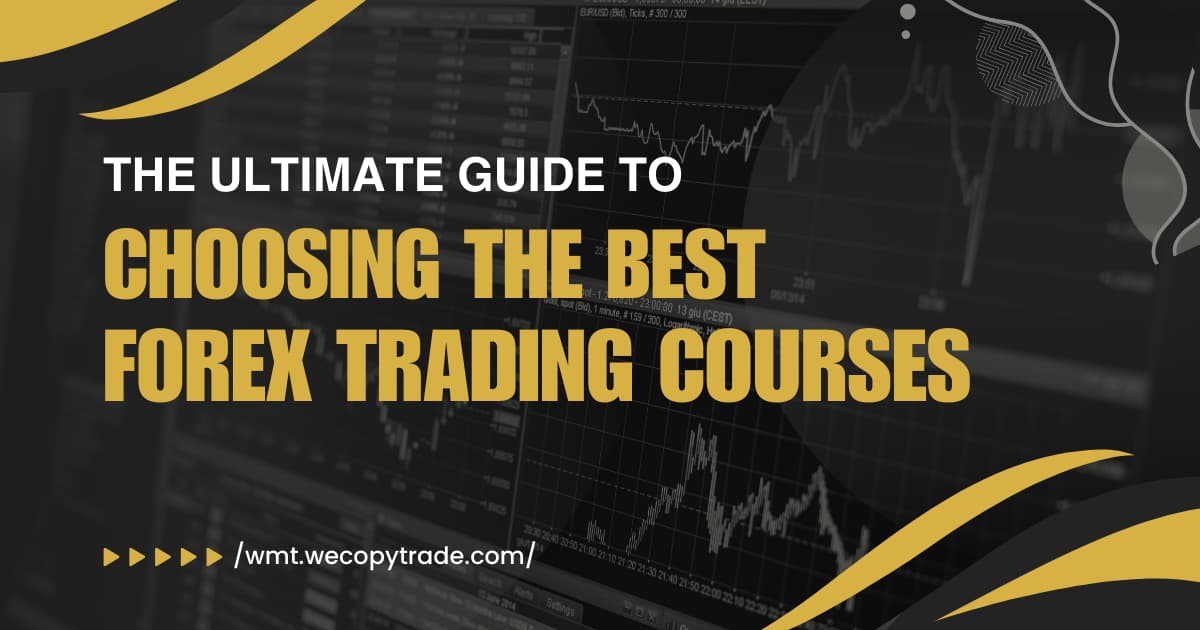Navigating the world of Forex trading can feel like entering a vast ocean without a map. The allure of potential profits is strong, but the complexities of currency markets demand a solid understanding of strategies, risk management, and market analysis. Choosing the right Forex trading course is therefore a crucial first step for aspiring traders. But with a plethora of options available, each promising to unlock the secrets of profitable trading, how do you determine what is the best Forex trading course for you? This article will explore the key factors to consider when selecting a Forex trading course, helping you make an informed decision and embark on a successful trading journey.
Defining “Best”: What to Look for in a Forex Trading Course
The “best” Forex trading course isn’t a one-size-fits-all solution. It depends heavily on your individual needs, learning style, and experience level. However, some core elements consistently distinguish high-quality courses from less effective ones.
- Comprehensive Curriculum: A good course should cover the fundamentals of Forex trading, including currency pairs, market terminology, charting techniques, and economic indicators.
- Practical Application: Theory is important, but practical application is essential. Look for courses that incorporate real-world examples, trading simulations, and opportunities to practice your skills.
- Risk Management Strategies: Forex trading involves inherent risks. A responsible course will dedicate significant time to teaching effective risk management techniques, such as setting stop-loss orders and managing leverage.
- Experienced Instructors: The instructors should be experienced traders with a proven track record of success. Look for courses that provide information about the instructors’ backgrounds and trading experience.
- Support and Community: A supportive learning environment can significantly enhance your progress. Consider courses that offer access to a community forum, mentorship programs, or live Q&A sessions with instructors.
Levels of Forex Trading Courses
Forex trading courses cater to different experience levels. Understanding these levels will help you choose a course that aligns with your current knowledge and skills.
- Beginner Courses: These courses are designed for individuals with little to no prior knowledge of Forex trading. They cover the basics of currency markets, trading terminology, and fundamental analysis.
- Intermediate Courses: Intermediate courses build upon the foundation established in beginner courses. They delve deeper into technical analysis, trading strategies, and risk management techniques.
- Advanced Courses: Advanced courses are for experienced traders who want to refine their skills and explore more sophisticated trading strategies. They may cover topics such as algorithmic trading, hedging strategies, and advanced risk management techniques.
Choosing the Right Course for You
Before enrolling in a Forex trading course, take some time to assess your own needs and goals. Consider the following questions:
- What is your current level of knowledge and experience in Forex trading?
- What are your specific learning goals?
- What is your preferred learning style (e.g., visual, auditory, kinesthetic)?
- What is your budget for a Forex trading course?
- How much time can you dedicate to studying and practicing?
Answering these questions will help you narrow down your options and choose a course that is tailored to your individual needs. Remember to read reviews, compare course content, and consider the instructors’ qualifications before making a decision. The right course can provide you with the knowledge and skills you need to succeed in the Forex market.
FAQ: Finding the Best Forex Trading Course
- Q: Are free Forex trading courses worth it?
- A: Free courses can provide a basic introduction to Forex trading, but they often lack the depth and practical application of paid courses. They can be a good starting point, but don’t rely on them solely for your education.
- Q: How much does a good Forex trading course cost?
- A: The cost of a Forex trading course can vary widely, from a few hundred dollars to several thousand dollars. The price often reflects the comprehensiveness of the curriculum, the experience of the instructors, and the level of support provided.
- Q: Can a Forex trading course guarantee profits?
- A: No reputable Forex trading course can guarantee profits. Forex trading involves inherent risks, and success depends on your own skills, discipline, and risk management abilities.
- Q: What are some red flags to watch out for when choosing a Forex trading course?
- A: Be wary of courses that promise unrealistic profits, use aggressive marketing tactics, or lack transparency about their instructors’ qualifications.
Comparative Table: Example Forex Trading Course Features
| Course Feature | Course A | Course B | Course C |
|---|---|---|---|
| Curriculum Depth | Basic | Intermediate | Advanced |
| Instructor Experience | 5 years | 10 years | 15 years |
| Risk Management Focus | Moderate | High | Very High |
| Community Support | Forum | Forum + Mentorship | Forum + Mentorship + Live Q&A |
| Price | $500 | $1500 | $3000 |
Ultimately, the journey to finding what is the best Forex trading course is a personal one. By carefully considering your needs, researching your options, and focusing on courses that prioritize comprehensive education and practical application, you can significantly increase your chances of success in the Forex market. Remember, continuous learning and adaptation are key to navigating the ever-changing landscape of Forex trading.

